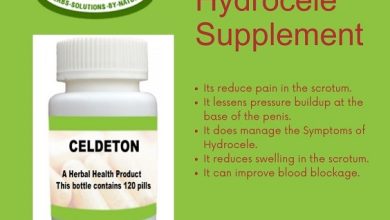Best Treatment for Hydrocele in Adults: Options That Work

Hydrocele in adults refers to the accumulation of fluid around the testicle, usually causing swelling in the scrotum. Although often painless, it can create discomfort, embarrassment, or concern, especially if the swelling increases. Understanding how to manage and treat hydrocele effectively matters. Whether you’re looking for hydrocele treatment without surgery in adults or considering long-term medical care, this guide lays out the best ways to manage this condition with clarity and practicality.
What Causes Hydrocele in Adults?
Hydroceles often result from injury, inflammation, or infection of the testicle or epididymis. In some cases, the cause may remain unclear. Unlike in infants, where hydroceles usually resolve on their own, adult hydrocele treatment requires more attention because the issue typically persists or worsens over time.
If you’re dealing with a growing scrotal swelling, you might start to explore the best treatment for hydrocele in adults to find relief and get back to normal life.
Symptoms That Shouldn’t Be Ignored
You may notice a painless, soft swelling in one or both sides of the scrotum. The discomfort might worsen during physical activity, or the weight of the swelling may start interfering with daily life. Though hydroceles are rarely dangerous, they can occasionally suggest underlying conditions such as testicular cancer or infections like epididymitis. That’s why timely assessment and correct hydrocele adult treatment is essential.
Related Articles: Best Hydrocele Treatment Tablets: The Ultimate Solution for Fast Relief!
Diagnosis and Evaluation
A clinical examination typically confirms a hydrocele. The doctor may shine a light through the scrotum (transillumination) to check if the swelling is filled with fluid or a solid mass. Ultrasound scans may follow, especially if there’s any doubt about the diagnosis or if other testicular issues are suspected.
Hydrocele Treatment in Adults: The Options
Let’s explore the main hydrocele in adults treatment options, starting with conservative approaches and moving on to procedural interventions.
1. Watchful Waiting
In mild cases with little or no discomfort, doctors may recommend observation. This approach suits men whose hydroceles are small and not causing inconvenience. If the swelling doesn’t increase and remains painless, regular monitoring may be all you need.
Still, if you notice any change or pain, it’s time to reassess and consider a different treatment for hydrocele in adults.
2. Hydrocele Treatment Without Surgery in Adults
Many adults seek non-surgical options first, hoping to avoid invasive procedures. Several approaches might help reduce discomfort or delay surgery.
a. Supportive Underwear
Wearing supportive underwear or athletic briefs may reduce the sensation of heaviness and relieve discomfort during movement. Though it won’t cure the condition, this method provides comfort as part of ongoing hydrocele adults treatment.
b. Herbal and Natural Remedies
Some turn to herbal remedies or dietary changes to support lymphatic drainage and reduce inflammation. Herbs such as turmeric, ginger, and ashwagandha are sometimes suggested in traditional systems for fluid balance.
While scientific evidence remains limited, anecdotal reports suggest that some men experience relief using these methods. However, always speak with a medical professional before starting herbal treatments, especially if you’re already taking other medication.
You can explore more about hydrocele treatment without surgery in adults by comparing different natural support techniques alongside clinical guidance.
Related Articles: Hydrocele Treatment Tablets: The Ultimate Solution for Fast Relief
c. Aspiration
Aspiration involves using a needle to drain the fluid. This procedure offers temporary relief and is performed under local anaesthesia. It’s often recommended for those who aren’t good candidates for surgery due to age or other health conditions.
However, fluid often returns after aspiration, and there’s a risk of infection or recurrence. Therefore, this method usually works best as a short-term solution rather than a permanent adult hydrocele treatment.
3. Surgery: Hydrocelectomy
Surgery remains the most reliable and long-term option for hydrocele treatment in adults. Known as hydrocelectomy, the procedure involves removing the sac or closing it to prevent fluid accumulation. It’s typically done under general or spinal anaesthesia and completed as a day surgery in most hospitals.
What to Expect
- Minimal scarring
- Quick recovery (within 2 to 3 weeks for most men)
- High success rates
- Low risk of recurrence
You may experience some swelling or discomfort after surgery, but this usually settles within a few days. Your doctor will advise you on rest, follow-up care, and any restrictions on physical activity.
If you’ve already tried less invasive methods and found them lacking, hydrocelectomy offers the most dependable hydrocele treatment for adults.
Related Articles: Celdeton: The Power of Nature for Hydrocele Relief
Which Is the Best Treatment for Hydrocele in Adults?
That depends on your personal circumstances. Factors such as age, severity, health status, and preference all matter. Here’s a quick comparison to help you weigh your options:
| Treatment Option | Duration of Relief | Invasiveness | Recovery Time | Risk of Recurrence |
| Supportive Underwear | Temporary | None | None | High |
| Herbal Remedies | Varies | None | None | High |
| Aspiration | Short-Term | Low | 1–2 days | High |
| Surgery | Long-Term/Permanent | Moderate | 2–3 weeks | Low |
Discuss all options with your healthcare provider to determine the best match for your needs. If your hydrocele is large or growing, surgical removal will likely be the most effective form of treatment of hydrocele in adults.
Are There Any Risks?
Like all medical treatments, each approach carries risks.
- Aspiration may lead to infection or recurring fluid build-up.
- Surgery has risks such as bleeding, infection, or reaction to anaesthesia, though complications are rare.
- Herbal remedies could interfere with medications or fail to resolve the issue entirely.
Choosing the right hydrocele treatment adult pathway means weighing these risks against your comfort and the potential for long-term relief.
Related Articles: Surgery vs. Natural Treatment for Hydrocele in Men
How to Prepare for Treatment
If you’re planning surgery or aspiration, consider these preparations:
- Discuss medical history – Inform your surgeon of all medications, allergies, or conditions.
- Avoid blood thinners – These may need to be paused before procedures.
- Arrange transport – Especially for surgery, you may not be able to drive home.
- Plan rest time – You’ll likely need to limit strenuous activity post-treatment.
Planning ahead ensures your hydrocele in adults treatment goes smoothly and recovery is as stress-free as possible.
Living with a Hydrocele
While some men choose to delay treatment, untreated hydroceles may continue to grow. Large hydroceles can cause discomfort, make physical activity difficult, and create emotional distress.
If you’re looking for more than just symptom management, addressing the root issue with proper adult hydrocele treatment makes a real difference.
Myths About Hydrocele
Let’s clear up some common misconceptions:
- Hydrocele causes infertility – False. It doesn’t affect fertility unless linked with other underlying testicular conditions.
- Only older men get hydroceles – Not true. It can affect adults of any age.
- Hydrocele goes away on its own – Sometimes in children, but rarely in adults.
- Herbal treatments always work – Results vary, and more evidence is needed.
Understanding these facts helps in making informed choices about hydrocele adults treatment without confusion or fear.
Related Articles: Men’s Health Supplement Get Rid of Hydrocele Permanently
Final Thoughts
Dealing with a hydrocele can feel frustrating, but effective solutions are available. Whether you’re seeking hydrocele treatment without surgery in adults or preparing for a hydrocelectomy, taking timely action ensures you stay comfortable and avoid long-term issues.
Start by speaking with a qualified medical professional. They’ll help assess your situation, discuss options, and decide on the best course of hydrocele treatment in adults for you.
If you’re still unsure, review the pros and cons of each method again and take the first step by booking a consultation. Relief is possible — and within reach.




